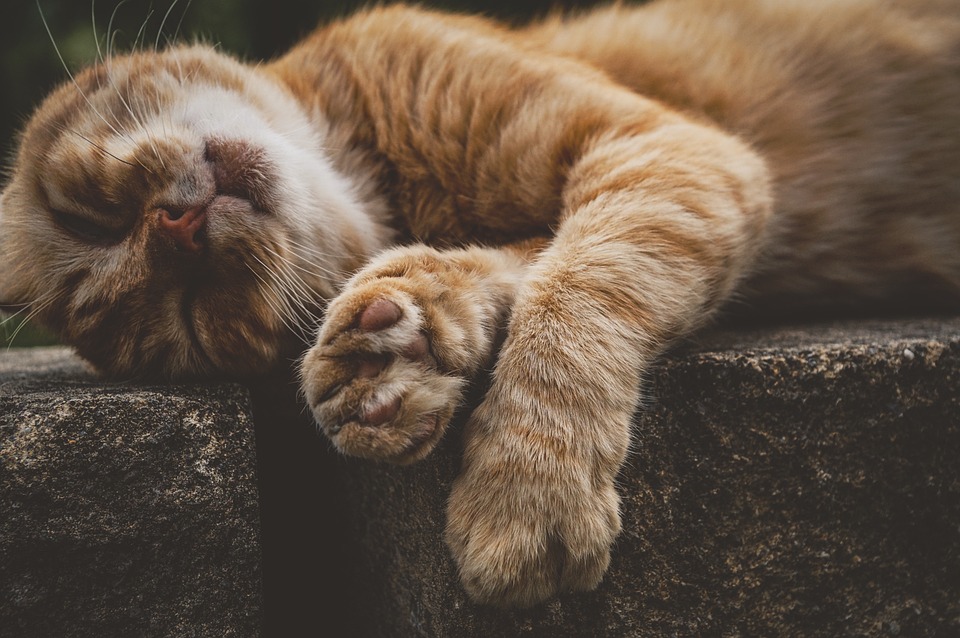Cats are known for their independent and sometimes aloof nature, but aggression in cats is a common issue that many cat owners face. It is essential to understand the causes and triggers of aggression in cats to effectively manage and prevent it. In this article, we will delve into the various factors that contribute to feline aggression and provide practical tips for cat owners to handle aggressive behaviors.
Types of Aggression in Cats:
There are several types of aggression that cats may exhibit. Understanding these different types can help cat owners identify and address the underlying causes of their cat’s aggression.
1. Territorial Aggression: Cats are territorial animals, and they may become aggressive when they feel their territory is being invaded by other animals or humans.
2. Fear Aggression: Cats may exhibit aggression when they feel threatened or scared. This type of aggression is often a defensive response to perceived danger.
3. Redirected Aggression: This occurs when a cat is unable to direct its aggression towards the actual cause of its frustration and instead redirects it towards another target, such as another pet or even a human.
4. Play Aggression: Cats, especially kittens, may exhibit rough play behavior that can sometimes escalate into aggression. This type of aggression is usually accompanied by other playful behaviors, such as pouncing or biting.
5. Predatory Aggression: Cats are natural predators, and they may display aggression towards smaller animals or even towards humans if they perceive them as prey.
Common Causes of Aggression in Cats:
Understanding the underlying causes of aggression in cats is crucial for addressing the behavior effectively. Some common causes include:
1. Lack of Socialization: Cats that have not been adequately socialized during their early stages of life may exhibit aggression towards unfamiliar people or animals.
2. Medical Issues: Certain medical conditions, such as pain, infections, or neurological problems, can contribute to aggressive behavior in cats. It is crucial to consult with a veterinarian to rule out any underlying medical causes.
3. Stress and Anxiety: Cats can become aggressive when they are stressed or anxious. Changes in routine, environment, or the presence of other animals can trigger aggressive behaviors.
4. Previous Traumatic Experiences: Cats that have experienced past traumas, such as abuse or neglect, may exhibit aggression as a defense mechanism.
5. Hormonal Factors: Unneutered male cats, in particular, may display aggression due to hormonal factors. Neutering can often help reduce aggressive behaviors in these cats.
Identifying Triggers for Aggression:
Once the underlying causes of aggression are understood, it is essential to identify the specific triggers that set off aggressive behaviors in cats. Triggers can be categorized into physical and environmental factors.
1. Physical Triggers: Certain actions or circumstances can physically provoke a cat into aggression. Examples include touching sensitive areas, causing pain or discomfort, or startling the cat.
2. Environmental Triggers: Changes in the cat’s environment or interactions with other animals or humans can trigger aggression. Examples include intrusion by other animals or humans, changes in routine or environment, or disputes over resources or territory.
Managing and Preventing Aggressive Behaviors:
Managing aggression in cats requires a multi-faceted approach that addresses the underlying causes, provides a safe environment, and uses positive reinforcement training techniques. Here are some tips for managing and preventing aggressive behaviors in cats:
1. Consult with a Veterinarian: It is essential to rule out any underlying medical causes of aggression. A veterinarian can also provide guidance on behavioral modification techniques.
2. Provide a Safe Environment: Create vertical spaces for your cat, such as cat trees or shelves, to give them a sense of security. Provide interactive toys, scratching posts, and hiding places to redirect their energy and aggression.
3. Enrichment and Mental Stimulation: Regular playtime and exercise can help reduce stress and anxiety in cats. Use puzzle feeders and treat dispensers to provide mental stimulation and keep them engaged.
4. Positive Reinforcement Training: Reward good behavior with treats, praise, or playtime. Avoid punishing your cat for aggressive behavior, as it can often worsen the problem.
5. Gradual Desensitization: Introduce your cat to triggers in a controlled manner, rewarding calm and relaxed behavior. Gradually increase exposure to the trigger while maintaining a positive and calm environment.
FAQs (Frequently Asked Questions):
Q1: Can aggression in cats be caused by an underlying medical condition?
A1: Yes, certain medical issues like pain, infections, or neurological problems can contribute to aggressive behavior in cats. It is crucial to consult with a veterinarian to rule out any underlying medical causes.
Q2: Is it possible to socialize an aggressive cat?
A2: Socialization is essential for cats, especially during their early stages of life. While it may be more challenging to socialize an aggressive cat, gradual exposure to positive experiences and the use of behavioral modification techniques can improve their social skills.
Q3: Should I punish my cat for aggressive behavior?
A3: No, punishment can often worsen aggressive behaviors in cats. Instead, focus on positive reinforcement training, rewarding good behavior, and redirecting their attention to more appropriate activities.
Q4: Can aggression in cats be completely eliminated?
A4: While complete elimination of aggression may not always be possible, with proper management, training, and a positive environment, aggressive behaviors can be significantly reduced and controlled.
Conclusion:
Understanding the causes, triggers, and management techniques for aggression in cats is crucial for cat owners. By addressing the root cause, providing a safe environment, and using positive reinforcement training, owners can help their cats overcome aggressive behaviors and create a harmonious living environment for both humans and feline companions. Remember, patience and consistency are key when working towards a more peaceful relationship with your cat.








